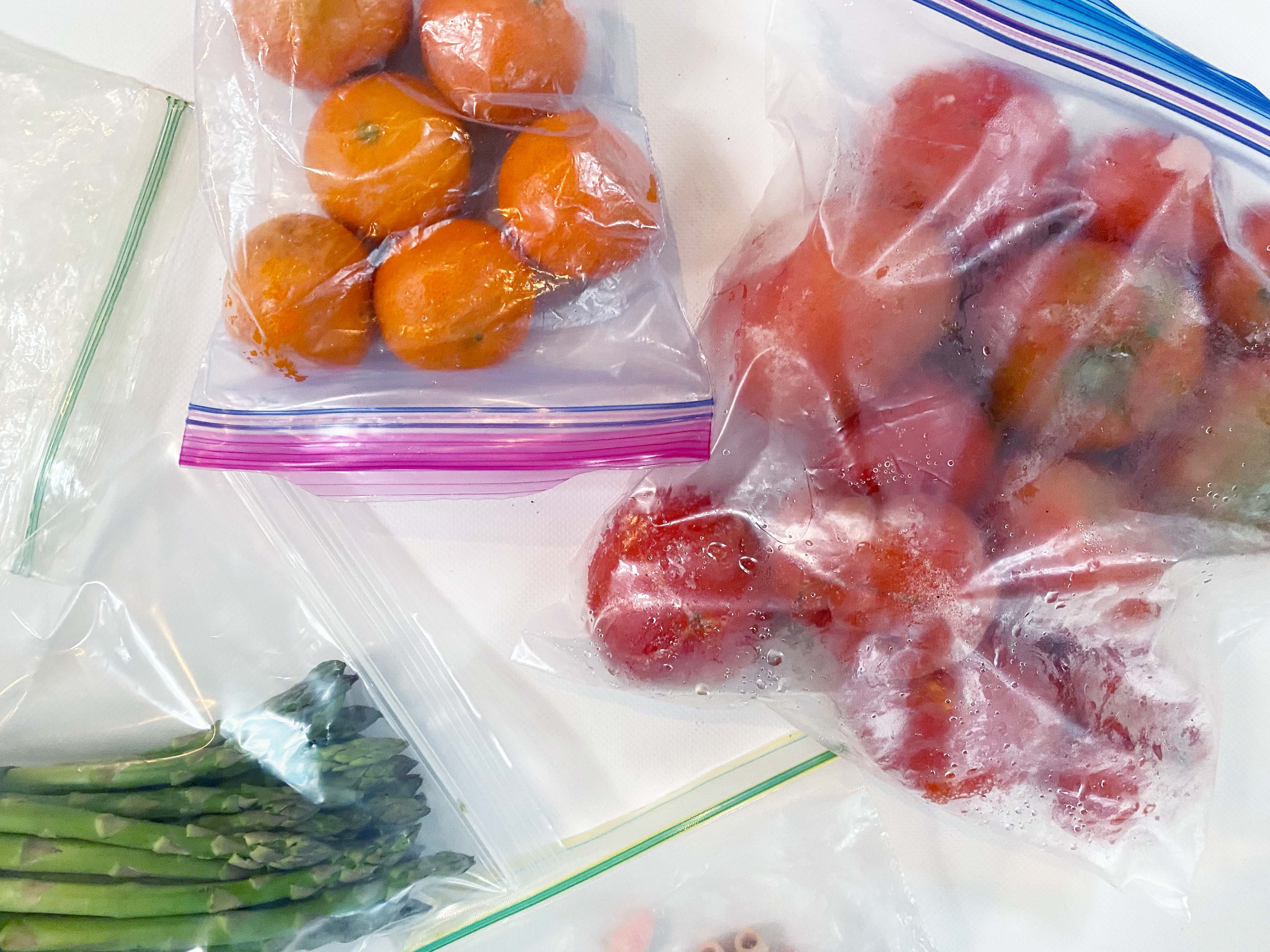
The Environmental Impact of ZipLoc Bags
Week 36
Plastic storage bags, often referred to by well known brand name, ZipLoc, are a staple in in nearly every household. In fact, most estimates show that the average American family uses 500 ZipLoc bags every year. Though commonly found in the kitchen, they are equally useful around the home and on the go. Unfortunately, their convenience comes at a price. So, this week, we are swapping these disposable baggies for something that won't inevitably end up in our landfills or waterways.
Disclosure: This post contains affiliate links, meaning, at no additional cost to you, I may earn a small commission if you click through and make a purchase.
Why are ZipLoc bags a problem?
Plastic storage bags are made of either low-density polyethylene (or LDPE) or high-density polyethylene (or HDPE) that fall under the category of plastic film. According to the EPA, 4.2 million tons of plastic bags and films were generated in 2018 and 3.04 millions tons ended up in a landfill. Like all plastics, they are made from crude oil, a non-renewable resource, which is problematic for two reasons: manufacturing generates significant pollution and the product is not biodegradable. As Sciencing.com put it, "they are difficult to produce and nearly impossible to get rid of once produced".
Most plastic bags take a minimum of 400 hundred years to break down. If that fact doesn't get your blood boiling, think of it this way...every plastic bag that's ever been sent to a landfill still exists. It gets worse. According to Natural-Environment.com, plastic bags cause over 100,000 sea turtle and other marine animal deaths every year when animals mistake them for food.
Are plastic storage bags recyclable?
Technically, most plastic zipper storage bags are recyclable. However, since they are considered a plastic film, they should never go into your curbside recycling, as they can clog the machinery at recycling facilities. Many grocery stores offer plastic film recycling drop offs near the front doors, but the bags should be clean and contain no food remnants. If yours doesn't, use this link to search for a drop off location in your area. Or, consider sending them to Terracycle for recycling.
What can I use instead?
For some of us, plastic storage bags are a necessity. So, here are 5 sustainable alternatives:
Stasher Bags
Stasher Bags are silicone storage bags that are hands down the most effective replacement for plastic storage bags. They are not only reusable, but they are infinitely more versatile than ZipLoc bags since They can be safely used in your dishwasher, freezer, microwave, oven, and even on your stove top! They come in a wide variety of colors and sizes to suit whatever your needs may be.
Read my next post for 25 Ways to Use Your Stasher Bag.

Marley's Monsters Cloth Snack Bags
These cloth snack bags are perfect for packing a lunch and can be purchased with a cotton or waterproof liner.

If You Care Paper Sandwich Bags
If disposable bags are a must, consider switching to these paper sandwich bags which can be composted after use.

DIY Beeswax Snack and Sandwich Bags
If you're feeling crafty, you can whip up a few beeswax wrap sandwich bags using cotton fabric remnants.

Upcycled Glass Jars
If you prefer a low budget ZipLoc swap, start saving those empty peanut butter and jelly jars. Most jars have an air tight seal, making them a great option for food storage. Heck, you could even reuse lidded plastic containers like the ones that sour cream and take out soups come in.